Chiang Rai Travel Guide: Top Tourist Attractions and Must-Visit Spots
Nestled in the northern region of Thailand, Chiang Rai offers a unique blend of cultural heritage and natural beauty. Known for its stunning temples and vibrant markets, Chiang Rai attracts travelers looking to experience a more tranquil and authentic side of Thailand. From visiting the famous White Temple to exploring the night bazaar, this city has something for everyone.
Blue Temple in Chiang Rai, Thailand
Many tourists visit Chiang Rai to discover its rich history and exquisite art. The Blue Temple and the Black House Museum are must-see spots for anyone interested in local culture. Private tours of these sites often provide deeper insights into their significance and the artistry behind them, making it a rewarding experience for both casual visitors and dedicated travelers.
Beyond its architectural wonders, Chiang Rai boasts beautiful landscapes and scenic rivers. Outdoor enthusiasts can enjoy hiking in the hills or relaxing by the riverfront, with plenty of cafes and restaurants offering local delicacies. This makes Chiang Rai not just a destination but a journey into the heart of northern Thailand.
Getting to Chiang Rai
Travelers can reach Chiang Rai by air, bus, car, or train, each offering unique benefits depending on your starting location and travel preferences.
By Air
Flying is the quickest way to get to Chiang Rai. Mae Fah Luang-Chiang Rai International Airport offers direct flights from Bangkok and other major cities. The airport is about 10 km from the city center. Flights from Bangkok take roughly 1.5 hours. Once you land, taxis and shuttle services are available for the short drive into town. For those coming from international destinations, connecting flights through Bangkok’s Suvarnabhumi or Don Mueang Airports are recommended.
By Bus
Taking a bus to Chiang Rai is a popular and economical option. Buses from Bangkok take around 12 hours, while those from Chiang Mai usually take about 3-4 hours. The journey offers comfortable, air-conditioned coaches, with several daily departures. The Green Bus company is a well-known provider with routes that connect major cities to Chiang Rai. Bus stations in Chiang Rai are centrally located, making it easy to reach your accommodation or explore the city upon arrival.
By Car
Driving to Chiang Rai gives freedom and the chance to explore scenic routes. From Bangkok, it’s a long drive, typically taking around 12-14 hours. Renting a car from Chiang Mai is also common, with the drive taking 3-4 hours along Route 118. The journey from Chiang Mai offers beautiful mountain views and interesting stops like hot springs. Car rental services are available at airports and major city centers. Make sure to carry an international driving permit if you’re planning to rent a car.
By Train
While no direct train line runs to Chiang Rai, travelers can take a train to Chiang Mai and then switch to a bus or car for the final leg. Trains from Bangkok to Chiang Mai are a popular choice, offering both day and night journeys. The trip takes about 12-15 hours, depending on the type of service. After reaching Chiang Mai, it’s a 3-4 hour bus ride or a drive to Chiang Rai. This option is great for those who enjoy scenic train rides and have extra time for travel.
Accommodation Options
Chiang Rai offers a variety of accommodation types, from luxury stays with top-notch amenities to budget-friendly hotels that provide comfort without breaking the bank. Let’s explore the best options for every type of traveler.
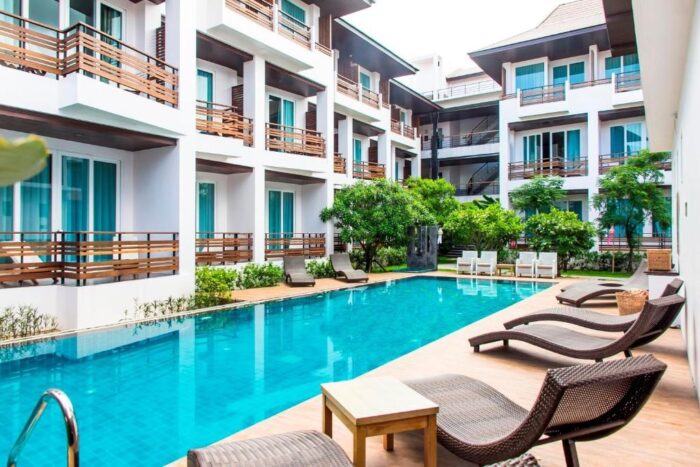
Luxury Stays
For those seeking a lavish experience, Le Patta Hotel is a top choice conveniently located in the city center. This hotel features spacious rooms, a beautiful outdoor pool, and high-end services.
Another excellent option is the Laluna Hotel and Resort, known for its tropical gardens and a large, stunning pool area. Guests can enjoy a serene environment while being close to the commercial establishments of Chiang Rai City, which is perfect for combining relaxation with convenience.
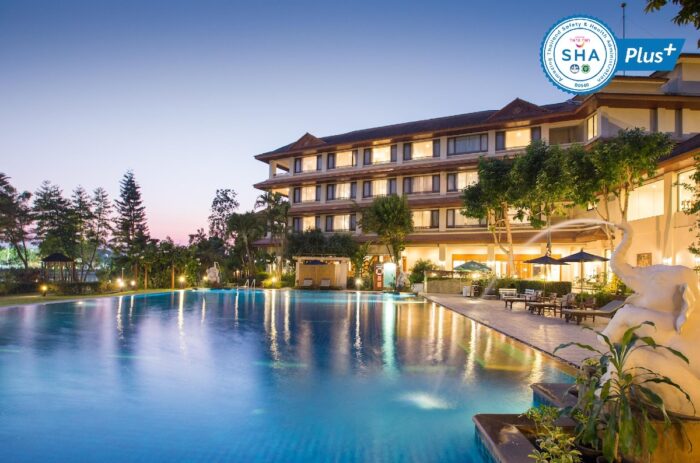
Private Accommodations
If privacy is a priority, consider staying at Sleepy House, a mid-range hotel offering cozy rooms and free breakfast. Its location within walking distance of the bus station and the Chiang Rai Night Bazaar makes it an excellent choice for those who prefer quieter stays but still want easy access to the main attractions.
Nak Nakara Hotel is another great option, offering a blend of traditional Thai decor and modern facilities. This hotel prides itself on its comfortable private rooms and attentive service, which ensures a pleasant stay for guests who value privacy and comfort.
Budget-Friendly Hotels
Travelers on a budget can find excellent accommodation options without sacrificing quality. The Baan Rub Aroon Guesthouse provides clean and homely rooms at affordable prices. Situated near the city center, this guesthouse makes it easy for budget travelers to explore the city’s commercial establishments and temples.
Baan Bua Guesthouse is another budget-friendly option, offering simple yet comfortable rooms and a tranquil garden area. This place is particularly recommended for backpackers and those looking to stretch their budgets while still enjoying a pleasant stay in Chiang Rai.
Cultural Landmarks and Temples
Chiang Rai is home to some of Thailand’s most iconic cultural landmarks and temples. Key sites include the striking White Temple, vibrant Blue Temple, historic Wat Phra Kaew, and the unique Baan Dam Museum.
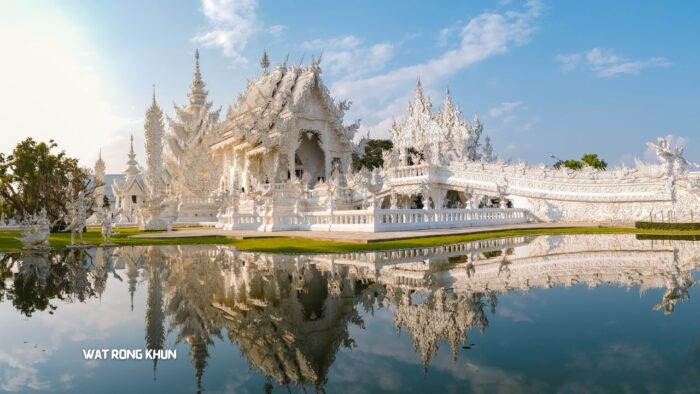
Wat Rong Khun: The White Temple
Wat Rong Khun, known as the White Temple, is an artistic masterpiece created by Thai artist Chalermchai Kositpipat. The temple features an all-white exterior symbolizing purity. Decorative mirrors embedded in the structure add a sparkling effect under sunlight. Visitors must walk over a bridge representing the journey to enlightenment. Inside, contemporary murals depict a blend of traditional Buddhist themes and modern elements, including pop culture icons. This stark contrast highlights the fusion of the old and the new, making it a must-visit site in Chiang Rai.
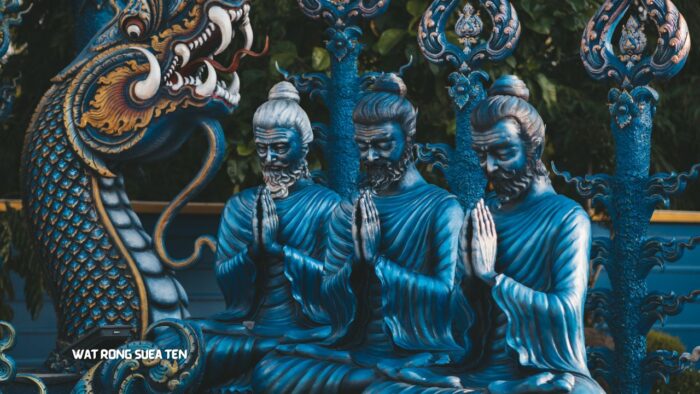
Wat Rong Suea Ten: The Blue Temple
Wat Rong Suea Ten, commonly referred to as the Blue Temple, is another visual spectacle in Chiang Rai. This temple is noted for its intense blue color and intricate gold details. Designed by a disciple of Chalermchai Kositpipat, it continues the tradition of blending art with spirituality. The main hall houses a majestic white Buddha statue, which stands in striking contrast to the blue interior. The walls and ceilings are adorned with detailed paintings that depict various aspects of Buddhist cosmology. The Blue Temple’s vibrant colors and elaborate designs make it a captivating spot for both worship and photography.
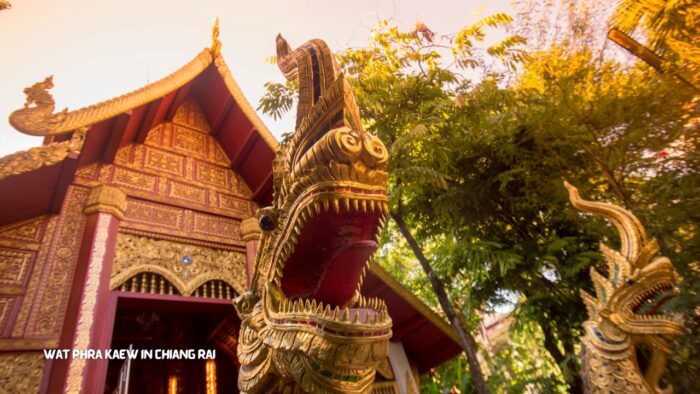
Wat Phra Kaew: The Temple of the Emerald Buddha
Wat Phra Kaew holds a significant place in Thai history and Buddhism. It is renowned for once housing the Emerald Buddha, Thailand’s most venerated religious artifact, before it was moved to Bangkok. Today, the temple remains an important pilgrimage site. The complex features a main viharn (assembly hall) that houses a jade replica of the original Emerald Buddha. Surrounding the viharn are statues and relics that reflect the temple’s rich cultural heritage. Wat Phra Kaew’s blend of historical and spiritual significance makes it an essential destination for those interested in Thai culture and religion.
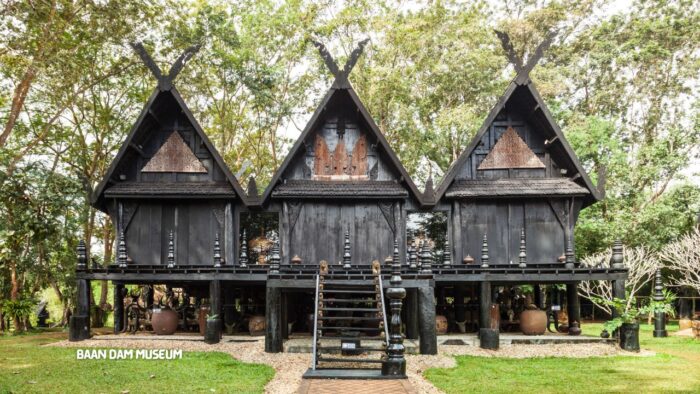
Baan Dam Museum: The Black House
Baan Dam Museum, also known as the Black House, is a creation of the late Thai artist Thawan Duchanee. The museum is a collection of 40 buildings featuring dark, gothic architecture and a mix of traditional Thai and modern art. The interiors display a wide range of artworks, including animal bones, sculptures, and paintings, each piece reflecting Thawan Duchanee’s unique artistic vision. Despite its name, the Black House is not a religious site but rather an exploration of the darker themes of life and death. Its bold and unconventional design sets it apart from other cultural landmarks, offering a contrasting experience to the temples of Chiang Rai.
Exploring Natural Wonders
Chiang Rai is a haven for nature lovers with its stunning waterfalls, majestic mountains, and lush tea plantations. Visitors can immerse themselves in the tranquil beauty and experience diverse natural attractions.
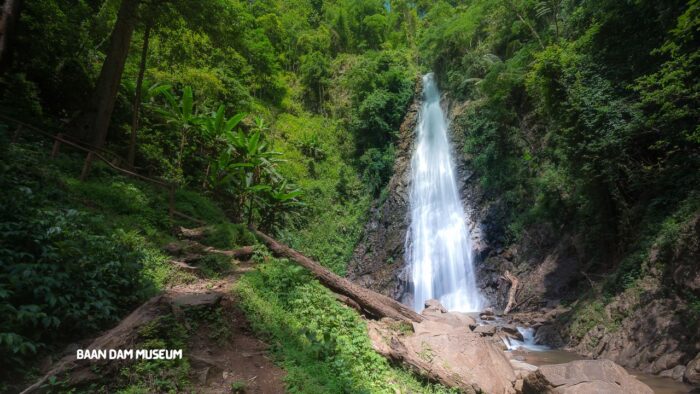
Khun Korn Waterfall
Khun Korn Waterfall is the tallest waterfall in Chiang Rai. It stands at an impressive height of 70 meters. The waterfall is located in Khun Korn Forest Park, offering visitors a refreshing escape. A 1.5-kilometer trek through dense jungle leads to this natural wonder. The path is well-marked and shaded, making it suitable for most fitness levels. The sound of cascading water can be heard from a distance, creating a soothing atmosphere. The pool at the base provides a cool respite, perfect for a quick dip. This site is ideal for hiking, photography, and simply enjoying nature’s serenity.
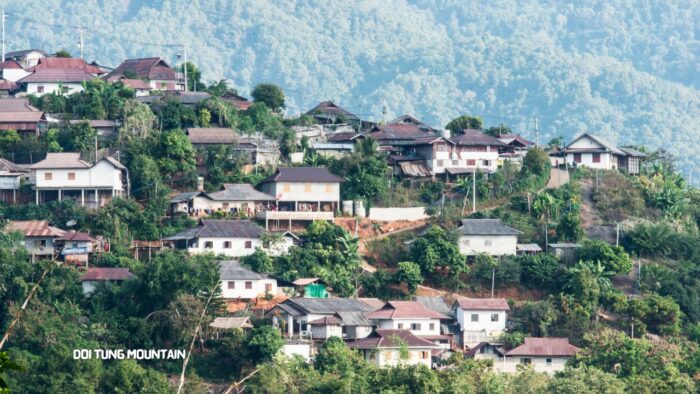
Doi Tung Mountain
Doi Tung Mountain is known for its breathtaking views and cultural significance. This mountain is home to the Doi Tung Royal Villa and Mae Fah Luang Garden. The Royal Villa showcases Lanna and Swiss architectural styles and offers insight into the late Princess Mother’s life. The Mae Fah Luang Garden, with its colorful flowers and sculptures, is a visual delight. Nature enthusiasts can hike through the nearby Doi Tung Development Project area, which focuses on sustainable development and reforestation. The mountain’s higher elevation provides a cooler climate, making it a pleasant retreat from the heat.

Choui Fong Tea Plantation
Choui Fong Tea Plantation is a scenic spot that spans vast hills covered in neatly trimmed tea bushes. Visitors can tour the plantation, learn about tea cultivation, and enjoy tea-tasting sessions. The plantation’s tea house offers panoramic views of the landscape, allowing for a relaxing and informative experience. Besides tea, the area also features a café where you can sample tea-infused desserts and beverages. The plantation is known for producing high-quality green, oolong, and black teas, and is a great place to purchase fresh tea leaves and products. Walking through the lush fields and breathing in the fresh mountain air is truly rejuvenating.
Activities and Experiences
Chiang Rai offers a wealth of activities and experiences for visitors, from wildlife adventures to vibrant night markets and serene boat trips.
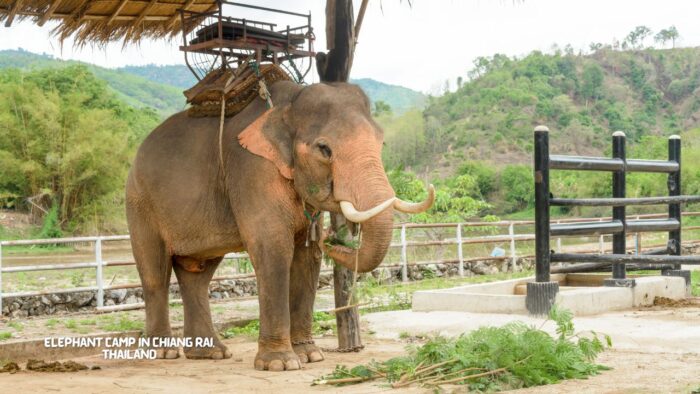
Elephant Sanctuaries and Trekking
Chiang Rai is home to several elephant sanctuaries where visitors can learn about and interact with these gentle giants ethically. At these sanctuaries, tourists can feed, bathe, and walk with elephants in a natural setting. Tours often include trekking experiences through lush jungles, providing a closer look at the region’s rich biodiversity.
Trekking in the nearby forests offers opportunities to explore the natural beauty of Northern Thailand. Popular spots include Huay Mae Sai Waterfall and the surrounding trails. Many day trips can be organized by local tour operators, ensuring a guided and safe journey.
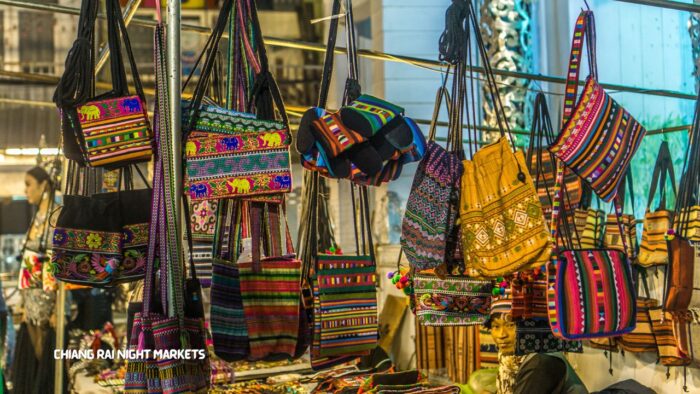
Chiang Rai Night Markets
The Chiang Rai Night Bazaar is a must-visit for anyone interested in local culture and cuisine. Open every evening near the bus station, it features a variety of stalls selling everything from traditional handicrafts to delicious street food. The atmosphere is lively, with performances and music adding to the experience.
Another popular market is the Saturday Walking Street, where locals and tourists flock for a festive and bustling environment. Here, one can find unique souvenirs, try local dishes, and enjoy live performances, making it a perfect addition to any Itinerary.
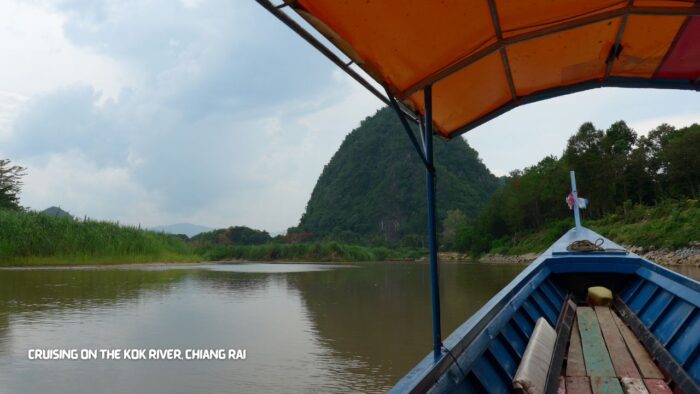
Boat Trips on the Kok River
Boat trips on the Kok River offer a tranquil and scenic way to explore Chiang Rai’s natural landscape. These trips often start in Chiang Rai city and travel through picturesque villages and lush countryside. Tours usually include stops at local markets and tribal villages, providing insights into traditional ways of life.
Tourists can choose from various trip lengths, including short river rides or day trips to destinations such as the Golden Triangle, where Thailand, Laos, and Myanmar meet. These trips highlight the beauty of Northern Thailand and offer a relaxing escape from the city’s hustle and bustle.
Itinerary Suggestions
Chiang Rai offers a blend of stunning temples, natural beauty, and cultural experiences. To help you make the most of your trip, consider these itinerary suggestions.
3-Day Chiang Rai Itinerary
Day 1:
- Wat Rong Khun (White Temple): Start your day at the iconic White Temple, an architectural masterpiece.
- Baan Dam Museum (Black House): Explore this art museum with a mix of traditional and contemporary Thai designs.
- Chiang Rai Clock Tower: In the evening, visit the Clock Tower, which lights up beautifully.
Day 2:
- Khun Korn Waterfall: A scenic spot ideal for a morning hike.
- Wat Rong Suea Ten (Blue Temple): Known for its striking blue interiors and intricate designs.
- Chiang Rai Night Bazaar: End your day at the bustling night market filled with local goodies.
Day 3:
- Wat Huay Pla Kang: A stunning temple complex with a giant statue of Guan Yin.
- Huay Mark Liam Hot Spring: Relax in natural hot springs.
- Chivit Thamma Da Coffee House: Perfect for a serene afternoon coffee.
Day Trips from Chiang Rai
Golden Triangle:
- Visit the border area where Thailand, Laos, and Myanmar meet. It’s rich in history and offers beautiful views.
Mae Fah Luang Garden and Doi Tung Royal Villa:
- Explore the lush gardens and the villa that was once home to Princess Mother Srinagarindra.
Elephant Valley Thailand:
- Spend a day learning about and interacting with rescued elephants in a humane environment.
Singha Park Chiang Rai:
- Take a break at this sprawling park, which features tea plantations, cycling paths, and scenic spots for picnics.
Cultural Exploration
Oub Kham Museum:
- Learn about the Lanna Kingdom through artifacts and exhibits that span centuries.
Hill Tribe Villages:
- Visit villages to experience the diverse cultures of the Akha, Karen, and Yao tribes.
Chiang Rai Walking Street:
- Every Saturday, the walking street comes alive with local crafts, street food, and performances.
Wat Phra Kaew:
- Important temple thought to be the original home of the Emerald Buddha, it offers historical insights and beautiful architecture.
These itinerary suggestions should help you plan a well-rounded and engaging visit to Chiang Rai.
Local Insights
Chiang Rai offers a rich cultural experience with its diverse hill tribes, unique Lanna-style architecture, and flavorful Northern Thai cuisine. Here’s what you need to know to immerse yourself in the local culture.
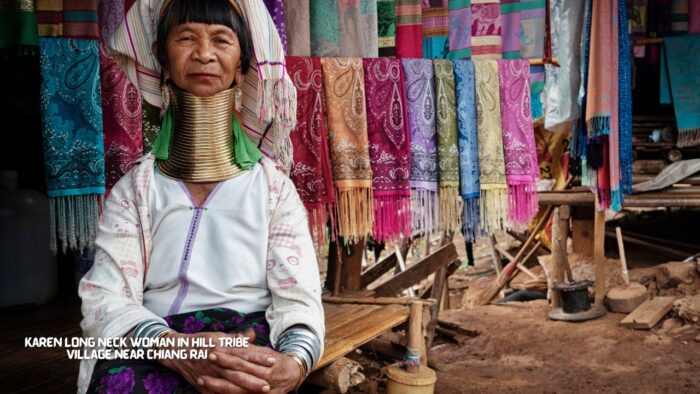
Hill Tribes and Cultural Diversity
The northernmost province of Thailand is home to several hill tribes, each with its own unique traditions. Among these are the Akha, Lahu, and Karen tribes. The Hill Tribe Museum in Chiang Rai city center provides insights into their history, clothing, and customs. Visitors can learn about their daily lives and even purchase handmade crafts directly from the tribespeople, supporting their communities.
Local markets also offer opportunities to interact with tribe members. The Chiang Rai Night Market is a popular spot where colorful handicrafts and textiles can be found, giving travelers a glimpse into the rich cultural tapestry of the region.
Lanna Style Architecture
Chiang Rai boasts numerous examples of Lanna-style architecture, which is characterized by intricate wooden carvings and sweeping rooftops. The White Temple (Wat Rong Khun) is a stunning example of modern Lanna art. Designed by Chalermchai Kositpipat, it stands out for its all-white structure, symbolizing Buddha’s purity.
In contrast, the Baan Dam Museum (Black House) presents a darker, more mysterious take on Lanna architecture. Created by Thawan Duchanee, it combines traditional Thai art with surreal elements, providing a unique cultural experience.
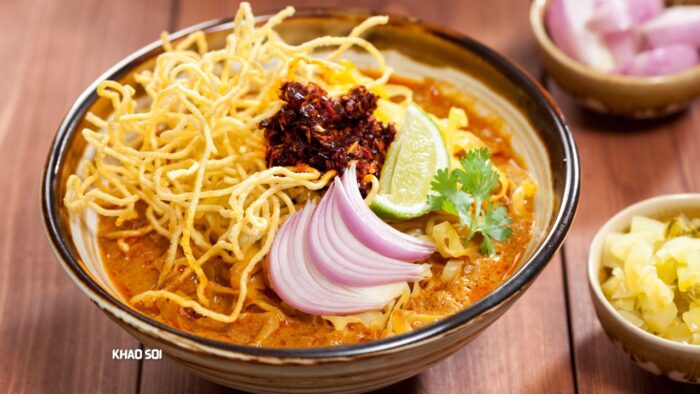
Northern Thai Cuisine
Northern Thai cuisine in Chiang Rai is a must-try, with its distinct flavors and local ingredients. Popular dishes include Khao Soi, a coconut curry noodle soup topped with crispy noodles, and Sai Oua, a spicy Chiang Rai sausage. Street food stalls and local restaurants in the Chiang Rai city center serve these traditional dishes, allowing visitors to savor authentic Northern Thai flavors.
The Chiang Rai Night Market is another excellent place to explore local food. Here, you can sample a variety of dishes, from grilled meats to exotic fruits, and experience the lively atmosphere of this cultural hub.
Transportation Within Chiang Rai
Getting around Chiang Rai is convenient with various options such as renting motorbikes, using taxis and Grab services, or taking public transport. Each method offers different advantages depending on your budget and comfort with navigating the area.
Renting Motorbikes and Scooters
Renting a motorbike or scooter is an affordable and flexible way to explore Chiang Rai. The cost is about 200 baht (around $6.65) per day. This allows travelers to visit tourist spots at their own pace.
Most rental shops require a valid driver’s license and a deposit. Helmets are mandatory for safety and can avoid fines from the traffic police. Motorbikes are ideal for those comfortable with riding and familiar with local traffic laws.
Parking is generally easy and free except in some busy tourist areas. Always lock your bike and take precautions to prevent theft.
Using Taxis and Grab Service
Taxis and Grab are reliable options for getting around Chiang Rai. Grab is a popular ride-hailing app available in many Southeast Asian countries, including Thailand. It offers a transparent fare system and is convenient for those unfamiliar with local routes.
Taxis are plenty, but it’s important to negotiate the fare before starting the trip. Many taxis don’t use meters. Grab service provides a safer and more standardized pricing structure.
Both options are more expensive than motorbike rentals but offer comfort, especially for those traveling with luggage or in groups. English-speaking drivers can be a plus for non-Thai speakers.
Public Transport Options
Public transport in Chiang Rai includes buses and songthaews (converted pick-up trucks with benches). The Chiang Rai Bus system is limited compared to larger cities but provides affordable rides around the city.
Songthaews run on fixed routes and fares can be as low as 20 baht per trip. They are a practical option for short distances. However, routes and schedules may not be clear to newcomers.
Though public transport is the cheapest option, it may not be the most convenient for tourists wanting to visit multiple attractions in one day.
Choosing the right mode of transport depends on individual needs, whether it’s the freedom of a motorbike, the convenience of Grab, or the economy of public buses.
Travel Tips and Practical Information
Understanding the cultural norms and navigating with a reliable map are crucial for a smooth experience in Chiang Rai. Here, readers will find essential details on local etiquette and effective ways to get around.
Cultural Etiquette
Respecting local customs is important in Chiang Rai. Greetings are traditionally done with a wai, placing hands together in a prayer position and bowing slightly. Dress modestly, especially when visiting temples; shoulders and knees should be covered.
Always remove shoes when entering someone’s home or a temple. Avoid touching people’s heads, as it’s considered the most sacred part of the body. Public displays of affection are frowned upon. During the three main seasons (Cool Season, Hot Season, and Rainy Season), adapting your attire to suit the weather will help you fit in better and be more comfortable.
Map and Navigation
Chiang Rai’s layout is fairly easy to navigate. Use a detailed Chiang Rai map to plan your routes. Major attractions like the White Temple, Blue Temple, and Night Bazaar are well-marked and accessible.
Public transportation includes tuk-tuks, songthaews (shared taxis), and rental scooters. For longer distances, consider bus services or private taxis. Google Maps and local travel apps can assist you in finding precise locations and routes. During the Rainy Season, plan extra travel time due to slower traffic. Always carry a physical map as a backup for areas with limited internet access.
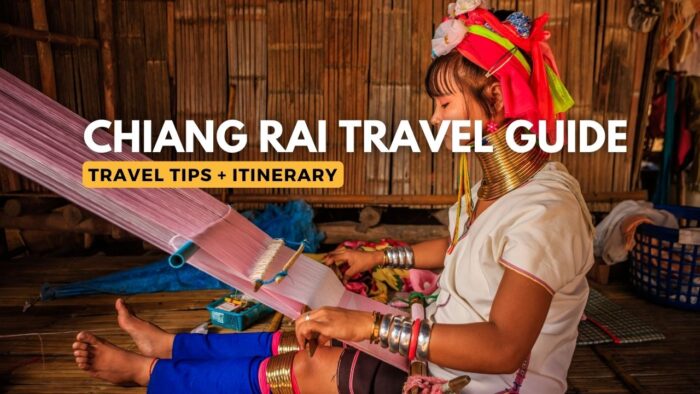
Frequently Asked Questions
What are some unique activities to experience in Chiang Rai?
Visitors can explore the stunning White Temple, also known as Wat Rong Khun. Another unique spot is the Blue Temple (Wat Rong Suea Ten), known for its vibrant blue color and intricate designs. For a cultural experience, the Black House (Baan Dam Museum) offers a mixture of traditional Thai architecture and modern artistic interpretations.
Can you provide a list of free attractions to visit in Chiang Rai?
Chiang Rai provides several free attractions worth visiting. The Saturday Night Walking Street is perfect for mingling with locals and trying street food. Another free activity is visiting the Clock Tower, a golden landmark in the city center that offers a light and sound show in the evening. Additionally, visitors can enjoy a stroll along the Kok River.
How can I make the most of a two-day trip to Chiang Rai?
On the first day, visit the White Temple and Blue Temple, followed by a trip to Baan Dam Museum. On the second day, explore Singha Park and the Baandam Museum. In the evening, don’t miss the Night Bazaar for some local shopping and food. Using public transport like the free tram at Singha Park can help save time and money.
What are the best family-friendly activities in Chiang Rai?
Families can enjoy a day at Singha Park, which offers cycling and zip-lining. The Mae Fah Luang Art and Cultural Park is another great spot, featuring art exhibits and peaceful gardens. For a more interactive experience, the Chiang Rai Beach along the Kok River is a pleasant location for a picnic and some leisure time.
What are the top things to do in Chiang Rai after dark?
Chiang Rai offers several exciting activities after dark. The Night Bazaar in the city center is perfect for exploring local goods and delicacies. Another great spot is the Saturday Night Walking Street, which becomes lively with food stalls, handmade crafts, and live music. Additionally, catching the light and sound show at the Clock Tower can be a memorable experience.
When is the ideal time of year to travel to Chiang Rai?
The best time to visit Chiang Rai is between November and February, when the weather is cooler and dry. During this period, temperatures are pleasant, making it ideal for exploring outdoor attractions and activities. This time also coincides with various local festivals, offering travelers a chance to experience the local culture.
Chiang Rai Travel and Tour Packages
Like, Follow, and Subscribe to OutofTownBlog.com on Facebook, Twitter, Instagram, Pinterest, and Team out Of Town on YouTube for more Chiang Rai Tourist Spots.
Read:
